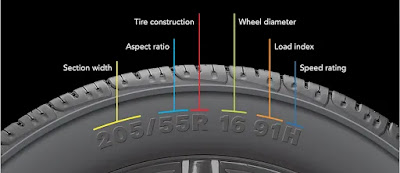Everything You Need to Know About Tires: A Complete Guide
Introduction
Tires are an essential component of any vehicle, yet they are often overlooked until something goes wrong. A well-maintained tire ensures safety, enhances fuel efficiency, and improves overall driving performance. In this post, we’ll explore everything about tires—from their composition and types to maintenance tips and future trends in the tire industry.
1. The Basics: What Are Tires Made Of?
Tires are composed of a combination of materials, each contributing to their strength, durability, and performance:
Rubber: Provides grip and flexibility, ensuring the tire maintains traction on various surfaces.
Steel Belts: Reinforce the tire, offering strength and resistance against punctures.
Inner Liner: A layer of synthetic rubber that keeps air inside for tubeless tires.
Textile Fabrics: Enhance flexibility and help the tire maintain its shape under pressure.
Chemical Compounds: Add durability, heat resistance, and traction properties.
Understanding these components helps you appreciate the engineering that goes into designing a safe and reliable tire.
2. Types of Tires
Different driving conditions and vehicle types require specific tires. Here are the most common types:
All-Season Tires: Suitable for everyday driving in moderate weather conditions.
Winter Tires: Equipped with deeper treads and softer rubber to handle icy and snowy roads.
Performance Tires: Designed for high-speed stability and superior handling on dry and wet roads.
Off-Road Tires: Built with rugged treads to provide traction on gravel, mud, and rocky terrain.
Run-Flat Tires: Allow you to continue driving for a short distance after a puncture.
When choosing a tire, consider your driving habits, climate, and road conditions.
3. How to Choose the Right Tire
Picking the right tire involves understanding key factors:
Vehicle Compatibility: Refer to your vehicle’s manual for the recommended tire size and specifications.
Tire Size: Read the sidewall code (e.g., 205/55R16) to ensure the right fit.
Weather Conditions: Select tires that match your local climate—all-season, summer, or winter tires.
Driving Style: Aggressive drivers may prefer performance tires, while casual drivers can opt for all-season options.
Additionally, check the tire’s speed rating, load index, and warranty to make an informed decision.
4. Signs You Need to Replace Your Tires
Regular tire inspections can prevent accidents and costly repairs. Watch for these signs:
Tread Wear: Use a tread depth gauge or the “penny test” to check if the depth is below the safe limit of 2/32 inches.
Cracks and Bulges: These indicate structural damage and a higher risk of blowouts.
Uneven Wear: Suggests issues with alignment, suspension, or tire pressure.
Frequent Air Loss: Could mean a slow puncture or damage to the inner liner.
Replacing worn-out tires ensures optimal performance and safety.
5. Tire Maintenance Tips for Longevity
Proper tire care can extend their lifespan and save you money. Follow these tips:
Check Tire Pressure: Maintain the recommended pressure level to prevent premature wear and improve fuel efficiency.
Rotate Tires: Rotate your tires every 5,000 to 8,000 kilometers to ensure even wear.
Balance and Align: Periodically check wheel alignment and balance to avoid uneven tread wear.
Avoid Overloading: Exceeding your vehicle’s weight capacity can strain the tires and reduce their lifespan.
Inspect Regularly: Look for damage, debris, or embedded objects that could lead to punctures.
6. The Future of Tires: Smart and Sustainable Options
The tire industry is undergoing a transformation with innovative designs and sustainable practices:
Airless Tires: Eliminating the risk of punctures, these tires are designed to be durable and maintenance-free.
Smart Tires: Integrated sensors provide real-time data on tire pressure, temperature, and tread wear.
Eco-Friendly Tires: Developed using sustainable materials like soybean oil and recycled rubber to reduce environmental impact.
3D-Printed Tires: Offering customizable designs and enhanced efficiency, this technology promises a more sustainable manufacturing process.
These advancements aim to enhance safety, convenience, and environmental sustainability.
Tires are more than just a component of your vehicle; they are a critical factor in ensuring safety, comfort, and efficiency. By understanding tire types, maintenance practices, and emerging technologies, you can make informed decisions to enhance your driving experience. Whether you’re an everyday commuter or an off-road enthusiast, proper tire care will keep you rolling smoothly and safely.
Got questions or tips about tires? Share your thoughts in the comments below!



.jpeg)




Mantap
ReplyDeleteGood info tq
ReplyDeleteReally helpful tips!
ReplyDelete